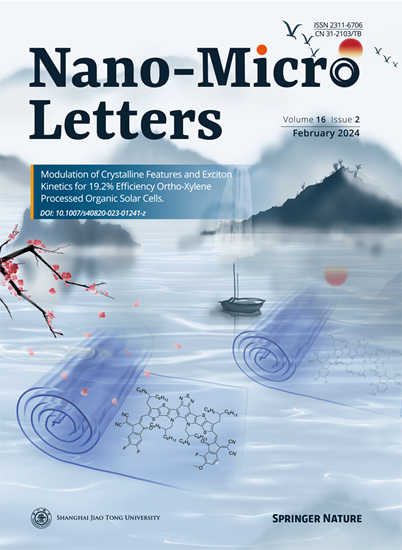High-Entropy Materials: A New Paradigm in the Design of Advanced Batteries.
IF 36.3
1区 材料科学
Q1 Engineering
引用次数: 0
Abstract
High-entropy materials (HEMs) have attracted considerable research attention in battery applications due to exceptional properties such as remarkable structural stability, enhanced ionic conductivity, superior mechanical strength, and outstanding catalytic activity. These distinctive characteristics render HEMs highly suitable for various battery components, such as electrodes, electrolytes, and catalysts. This review systematically examines recent advances in the application of HEMs for energy storage, beginning with fundamental concepts, historical development, and key definitions. Three principal categories of HEMs, namely high-entropy alloys, high-entropy oxides, and high-entropy MXenes, are analyzed with a focus on electrochemical performance metrics such as specific capacity, energy density, cycling stability, and rate capability. The underlying mechanisms by which these materials enhance battery performance are elucidated in the discussion. Furthermore, the pivotal role of machine learning in accelerating the discovery and optimization of novel high-entropy battery materials is highlighted. The review concludes by outlining future research directions and potential breakthroughs in HEM-based battery technologies.高熵材料:先进电池设计的新范式。
高熵材料(HEMs)由于其优异的结构稳定性、增强的离子电导率、优异的机械强度和优异的催化活性等特性,在电池应用中引起了广泛的研究关注。这些独特的特性使得hem非常适合于各种电池组件,如电极、电解质和催化剂。本文从基本概念、历史发展和关键定义开始,系统地研究了hem在储能领域应用的最新进展。本文分析了三种主要类型的hem,即高熵合金、高熵氧化物和高熵MXenes,重点分析了电化学性能指标,如比容量、能量密度、循环稳定性和速率能力。在讨论中阐明了这些材料增强电池性能的潜在机制。此外,强调了机器学习在加速发现和优化新型高熵电池材料方面的关键作用。最后,概述了基于hem的电池技术的未来研究方向和潜在突破。
本文章由计算机程序翻译,如有差异,请以英文原文为准。
求助全文
约1分钟内获得全文
求助全文
来源期刊

Nano-Micro Letters
NANOSCIENCE & NANOTECHNOLOGY-MATERIALS SCIENCE, MULTIDISCIPLINARY
CiteScore
32.60
自引率
4.90%
发文量
981
审稿时长
1.1 months
期刊介绍:
Nano-Micro Letters is a peer-reviewed, international, interdisciplinary, and open-access journal published under the SpringerOpen brand.
Nano-Micro Letters focuses on the science, experiments, engineering, technologies, and applications of nano- or microscale structures and systems in various fields such as physics, chemistry, biology, material science, and pharmacy.It also explores the expanding interfaces between these fields.
Nano-Micro Letters particularly emphasizes the bottom-up approach in the length scale from nano to micro. This approach is crucial for achieving industrial applications in nanotechnology, as it involves the assembly, modification, and control of nanostructures on a microscale.
 求助内容:
求助内容: 应助结果提醒方式:
应助结果提醒方式:


